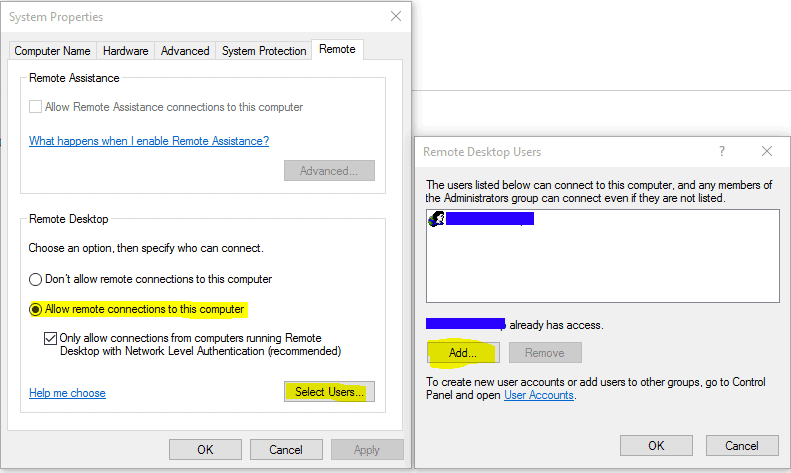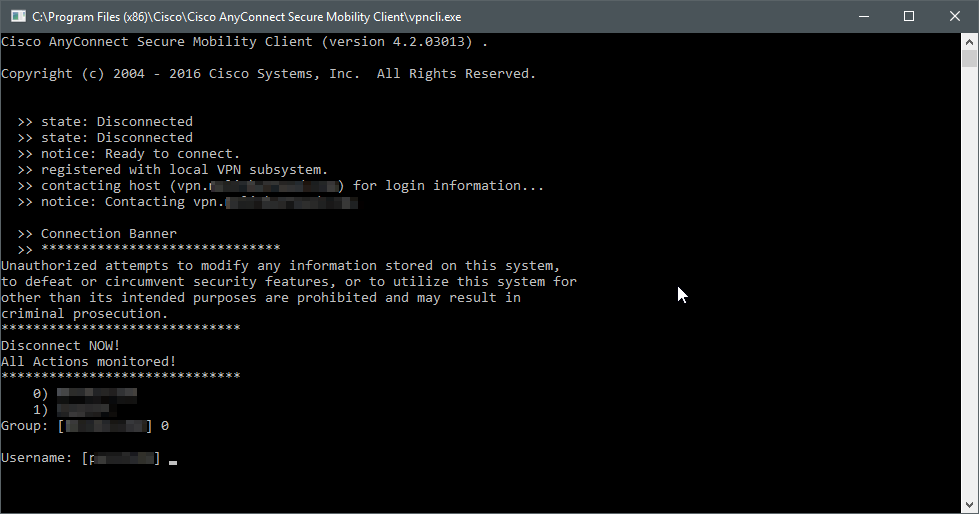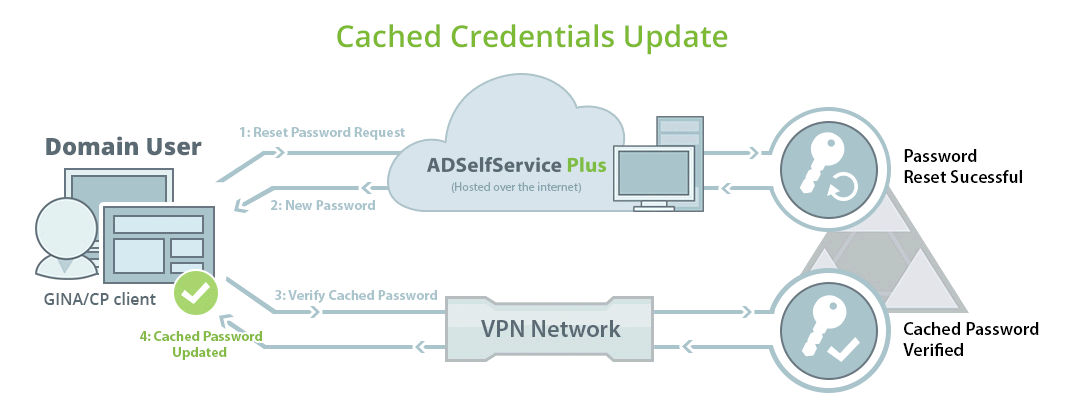
May 28, 2020 We have remote users with windows 10 and use Cisco AnyConnect Secure Mobility Client software for VPN. Our remote users login to Cisco AnyConnect first and then login to Windows. Recently when they get a prompt to change their domain password on Cisco AnyConnect, after they change password, they can't login to windows. They get the following msg. I am running Cisco Any connect secure Mobility Client ( version 3.1.04072). In my production environment, I have a Cisco 5515 firewall and I am running the Multifactor authentication server on a DC behind the firewall. When I run the client and enter my domain credentials, my phone does start to ring in a few seconds.
Cisco AnyConnect Secure Mobility Client Instructions for partner connections to AHCCCS systems.The instructions below are for Internet Explorer. Other browsers are supported for this connection, but the steps may differ. Open Internet Explorer. Open Internet Options. Click on the Security Tab, click on Trusted sites, then click the. The user did not have a direct connection to the domain so their cached credentials were still holding the forgoten password preventing the user logging on. The below is what I did to resolve the issue, it relied upon having a local account or someone elees pre cached credentials the user could log on with. Step 1 From the AnyConnect home page, tap Diagnostics Profile. Step 2 Choose: Import Profile—to specify the URL of a VPN profile to import. Delete Profile—to delete the current VPN profile from the device.
Problem:
A remote user had forgotten their password, so they phoned our Service Desk to get it reset. The user did not have a direct connection to the domain so their cached credentials were still holding the forgoten password preventing the user logging on.
The below is what I did to resolve the issue, it relied upon having a local account or someone elees pre cached credentials the user could log on with.
Solution:

- As part of my laptop builds I create a local standard user which comes in usful in situtauions like this, I gave the user the details for this recovery user and got them to log on.
- I got them to VPN in using their Cisco Anyconnect Client
- I could now remotly connect to the laptops
- Under Contol Panel => System => Remote settings I enabled Remote Desktop and added the user to the list of user that con connect.
- On my computer a ran MSTSC and connected to the computer.
- When prompted I entered the users new credentials.
- Windows clients only allow a single user to be logged on at a time, I received a couple of prompts informing me my local recovery user was going to be logged out.
- Once my RDP seesion had remotely logged in (updating the cached credentials with the new password) I logged out
- I then asked the user to logon with their new credentials and all was fine
- Finally I remotely connected to the computer and disabled remote dekstop.
Password For Vpn
ADSelfService Plus can automatically update the locally cached credentials in remote users’ machines as and when they reset their passwords.
To update cached credentials, ADSelfService Plus requires the Windows logon agent, bundled with the product, and a command line VPN client to be installed in the users' machines. It supports these VPN clients: Fortinet, Cisco IPSec, Cisco AnyConnect, Windows Native VPN, SonicWall NetExtender, Checkpoint EndPoint Connect, and SonicWall Global VPN. You can also configure custom VPN clients to update the cached credentials. This article will give you step-by-step instructions to configure a custom VPN client with ADSelfService Plus for cached credentials update.
Configuration steps
- Log in to ADSelfService Plus with admin credentials.
- Navigate to Configuration → Administrative Tools → GINA/Mac/Linux (Ctrl+Alt+Del).
- Click Updating Cached Credentials over VPN.
- Select Enable VPN settings.
- Choose Custom VPN from the VPN Provider drop-down list.
- Enter the VPN Hostname/IP and VPN Port No in their respective fields.
- Enter the VPN Client Location on users' machines. Example: C:Program Files (x86)FortinetFortiClient.
- Use macros (%username%, %password%, etc.) in the VPN connect/disconnect command fields. Example: connect -s adsspvpn -h %servername%:%portno% -u %user_name%:%password%
- Click Save.
Note: The VPN configurations will be reflected on the users’ machines either during the GINA/CP client installation, or when the GINA/CP scheduler runs.
Like this tip? Get the most out of ADSelfService Plus by checking out more tips and tricks here.
Cisco Anyconnect Cached Credentials
Request Support
Need further assistance? Fill this form, and we'll contact you rightaway.
Password self-service
Free Active Directory users from attending lengthy help desk calls by allowing them to self-service their password resets/ account unlock tasks. Hassle-free password change for Active Directory users with ADSelfService Plus ‘Change Password’ console.
One identity with Single sign-on

Get seamless one-click access to 100+ cloud applications. With enterprise single sign-on, users can access all their cloud applications with their Active Directory credentials. Thanks to ADSelfService Plus!
Password/Account Expiry Notification
Intimate Active Directory users of their impending password/account expiry by mailing them these password/account expiry notifications.
Password Synchronizer
Synchronize Windows Active Directory user password/account changes across multiple systems, automatically, including Office 365, G Suite, IBM iSeries and more.
Password Policy Enforcer
Ensure strong user passwords that resist various hacking threats with ADSelfService Plus by enforcing Active Directory users to adhere to compliant passwords via displaying password complexity requirements.
Cisco Anyconnect Cached Credentials Download
Directory Self-Update & Corporate Search
Portal that lets Active Directory users update their latest information and a quick search facility to scout for information about peers by using search keys, like contact number, of the personality being searched.

